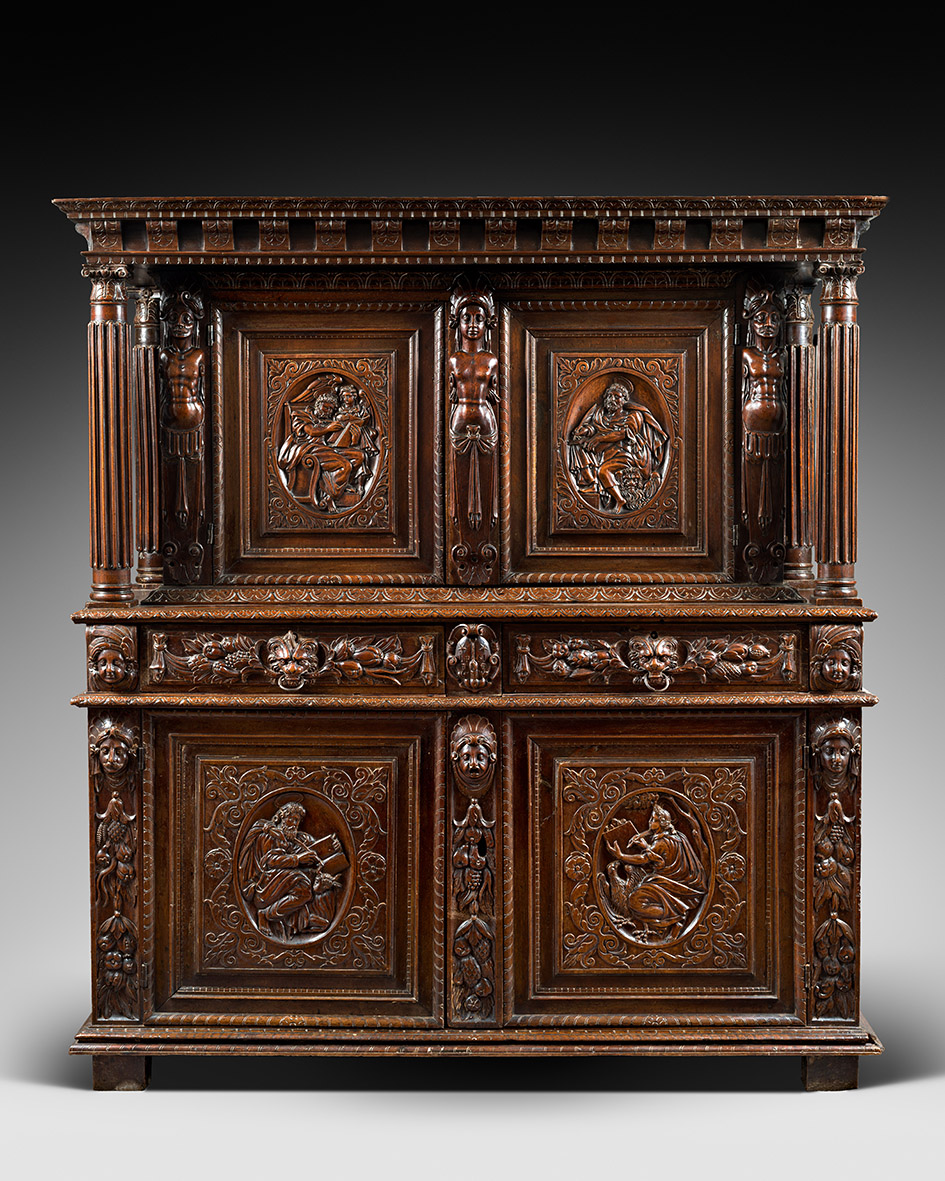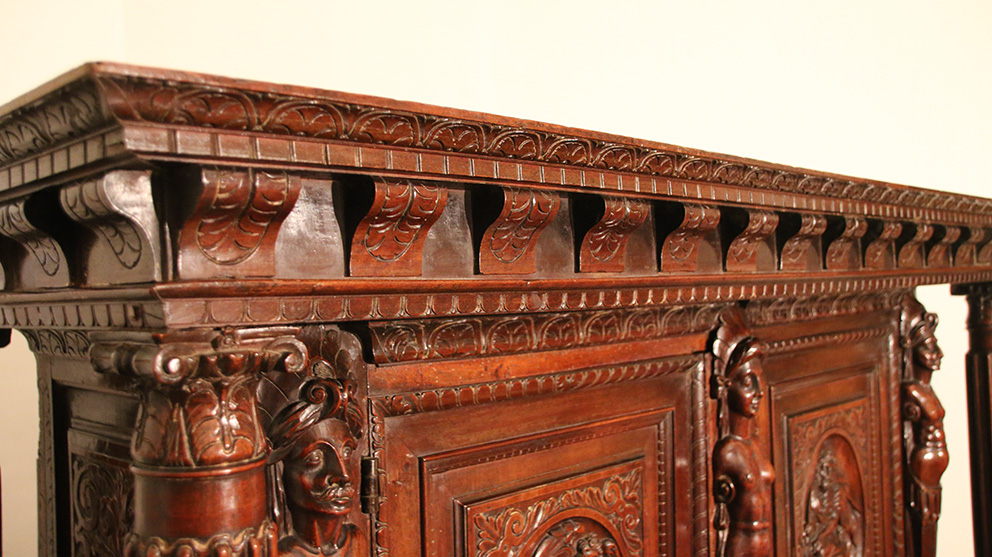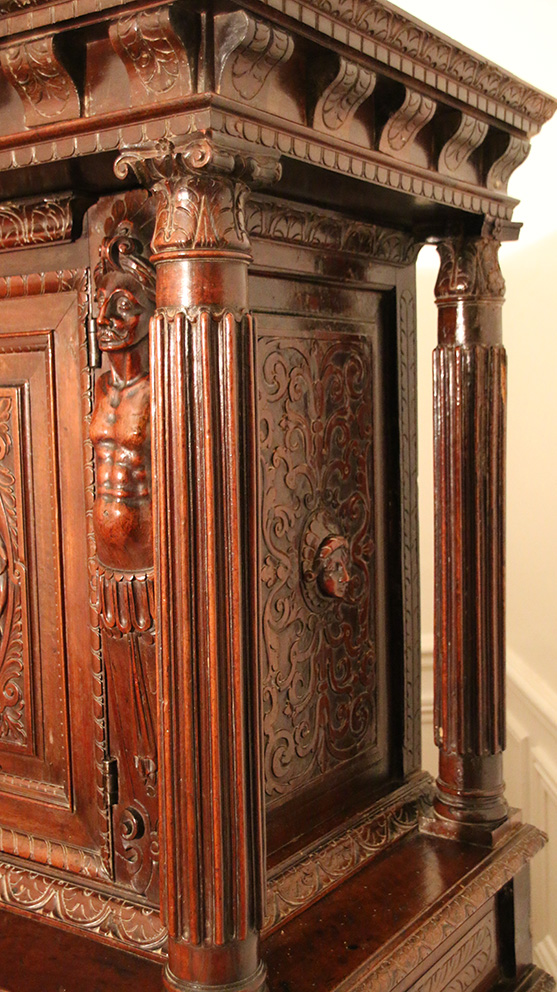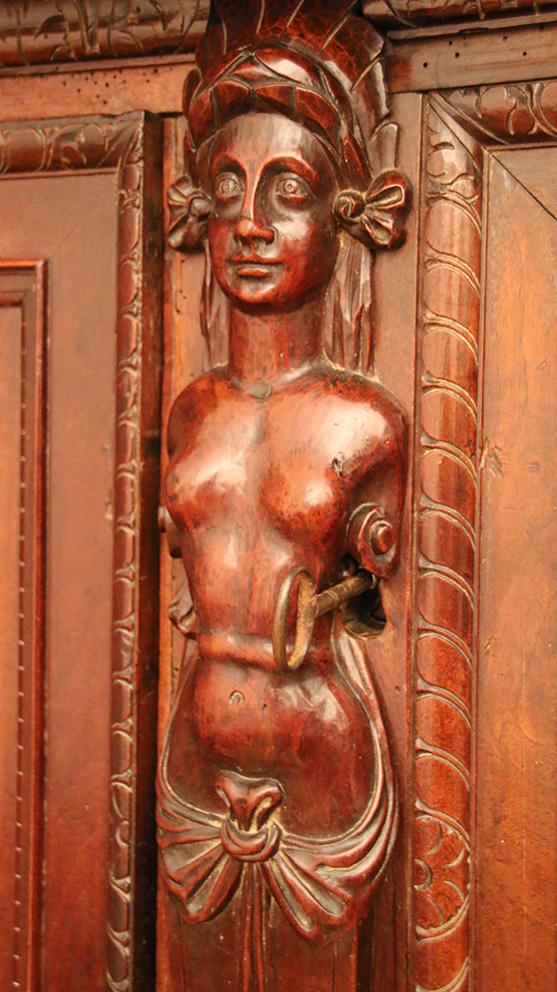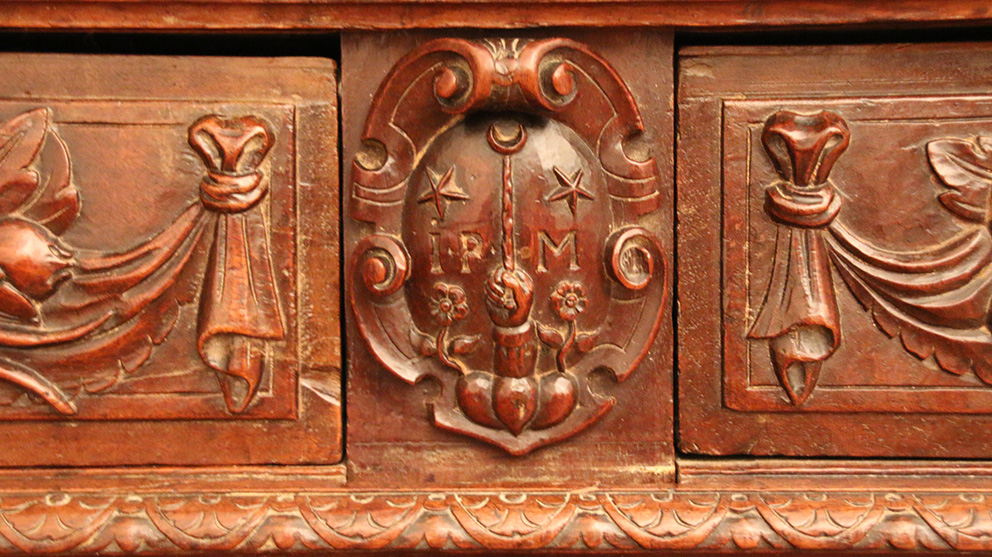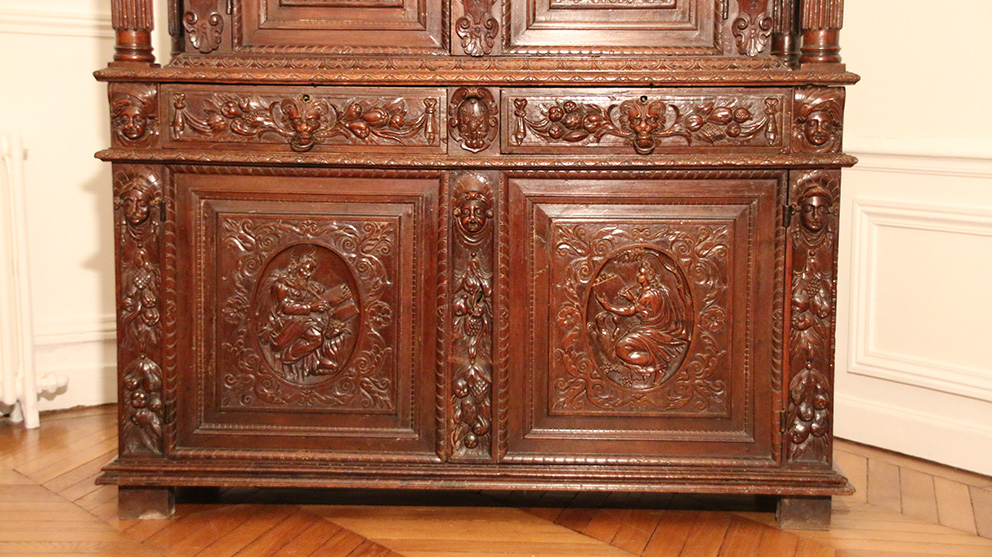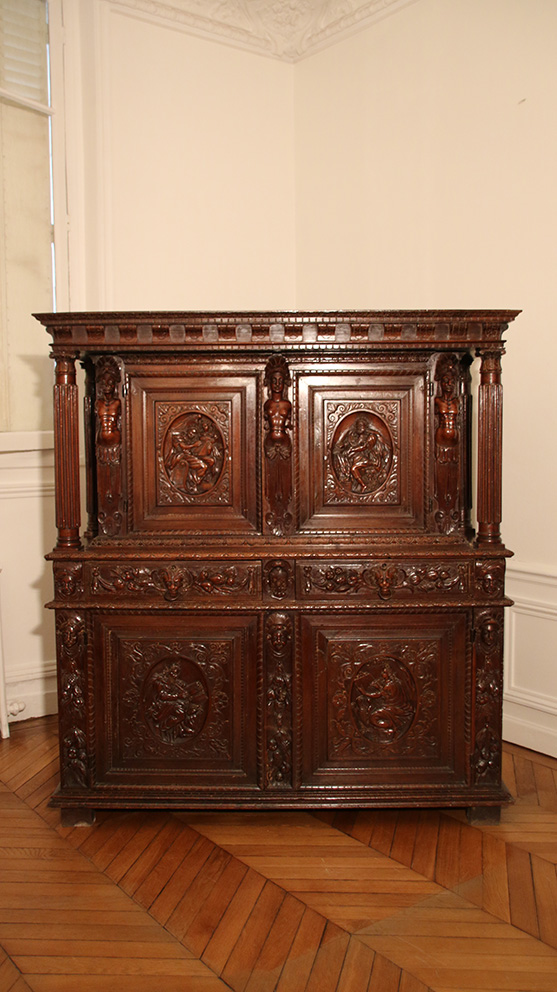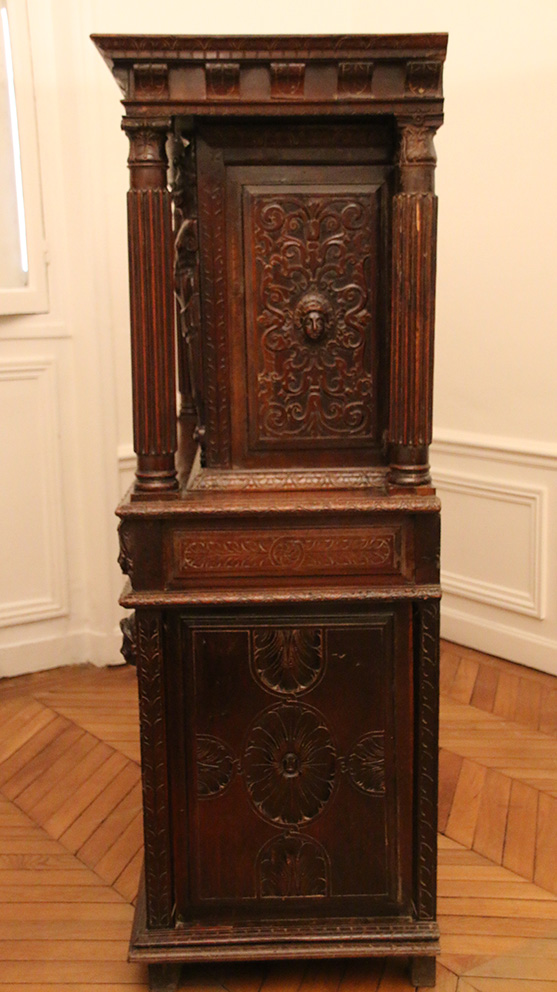Description
The cabinet’s upper body, slightly recessed is topped by an overlapping entablature and cornice supported both in the front and the rear by four fluted columns.
The lower body stands on four squared feet and a moulded base. Each door-leaf’s panel is centred by a low-relief carving presenting one of the four evangelists, wearing a draped cloak, inside an oval frame. This composition is surrounded by delicate vegetal motifs. On the right hand side, the youngest evangelist, John, is depicted beardless, a halo over his head. Holding a quill John is writting his gospel under a tree, accompanied by the eagle. On the opposite side, Luke is also depicted working on his gospel with a bull by his sides. The lateral and central posts are adorned with fruit garlands, draperies and masks.
Mouldings carved with rose motifs frame the belt. Two drawers are centred by a finely carved lion face surrounded by fruits and draperies. These drawers are flanked by two feathered masks and a shield on a cut-out leather.
The upper body is punctuated by two male terms and a female one in the centre. The drapery of the latter hides the keyhole. In the same manner as the lower body the door-leaves present the two other evangelists. Saint Mark and his lion on the right hand side panel face Saint Matthew and the angel on the left hand side.
The cabinet’s lateral sides present a rich ornamentation too. The upper body’s panels present a symmetrical vegetal composition in a flat-work low-relief spreading around a high-relief mask. Feather quills and palm leaves flank the composition. The lower body’s panel bears a flower decor with four leaves. On the belt a small flower is accompanied by two feather quills. The cabinet is topped by a cornice supported by palm leaves modillions.
This piece of funiture expresses the new interest patrons had for religious subjects during this period. The Old and New Testament have been a great source of inspiration for cabinet-makers. Therefore, today, this production is hard to attribute to clerical of profane use. We can find many examples in Picardy or in Western France and Languedoc. While the Old Testament have always been particularly favoured, the Counter Reform enhanced the depiction of characters from the New Testament. From the 16th century onwards Christ, the Virgin Mary, the four Evangelists, the twelve apostles are more commonly represented.
For this reason our cabinet might have furnished the house of an ecclesiastic as well as a profane but pious and rich family. The four symbols attributed to the writers of the Gospels, the Tetramorph, originates from the vision of Ezekiel (Ez ; 1,1-28) and the Apocalypse (Ap ; 4,1-11).
Because of its decor, the variety of motifs and its quality of execution this cabinet is an exceptional piece. The delicacy and refinement of the carvings express the work of a skilled cabinet-maker. The use of the flat-work carving, echoing the engraving industry, is characteristic of the school of Lyon around 1540-1570.
Literature
THIRION Jaques, Le mobilier du Moyen-Age et de la Renaissance en France, Edition Faton, 1998
BOCCADOR Jacqueline, Le Mobilier Français du Moyen-Âge à la Renaissance, 1996, Éditions d’art Monelle Hayot, Saint-Rémy-en-l’Eau.

